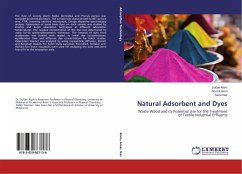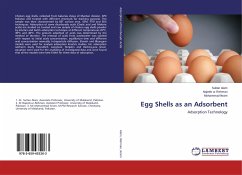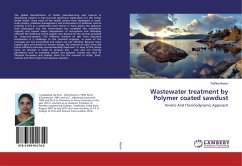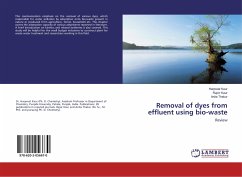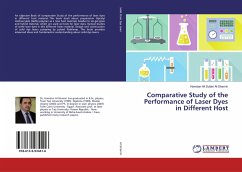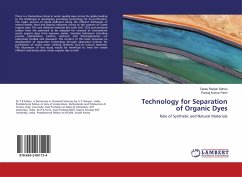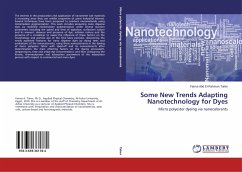
Adsorption Studies of Some Dyes on Different Adsorbent Surfaces
Versandkostenfrei!
Versandfertig in 6-10 Tagen
43,99 €
inkl. MwSt.

PAYBACK Punkte
22 °P sammeln!
Orange peels are a promising agro industry-waste that can be implemented in the extraction and production of pectin, as dietary fiber in food formulations, and as a biopolymer for metal adsorption in water treatment. In the present work, the adsorption behavior of methylene blue (MB) and erichrome black T (EBT) dyes by using cheap and eco-friendly orange peels which was chemically modified by sodium hydroxide (NaOH) and a cetyltrimethyl ammonium bromide (CTAB) have been studied. Physical and chemical properties of sorbents were determined by using Fourior transform Infrared (FTIR), Scanning El...
Orange peels are a promising agro industry-waste that can be implemented in the extraction and production of pectin, as dietary fiber in food formulations, and as a biopolymer for metal adsorption in water treatment. In the present work, the adsorption behavior of methylene blue (MB) and erichrome black T (EBT) dyes by using cheap and eco-friendly orange peels which was chemically modified by sodium hydroxide (NaOH) and a cetyltrimethyl ammonium bromide (CTAB) have been studied. Physical and chemical properties of sorbents were determined by using Fourior transform Infrared (FTIR), Scanning Electron Microscopy (SEM), Atomic Force Microscopy (AFM), Gas Chromatography Mass (GCMS) and Zeta Potential Analyzer techniques. The particle size of orange peels (OP) and its modified forms surfaces were measured by particle size analyzer and the results of surface area of OP (0.7069), SOP (1.1705) and CTAB-OP (1.2606) m2 / g. The adsorption properties of unmodified orange peels and modified orange peels surfaces includes a study of the adsorption of methylene blue and Eriochrome black T dyes from their aqueous solutions.



